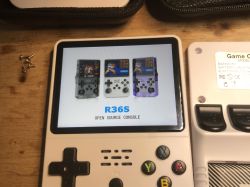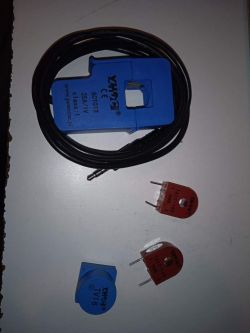FAQ
TL;DR: ±1.5 % accuracy “even a beginner can cope” [Elektroda, futek2, #20256375; #20255939]. The DIY ESP32 analyser logs voltage, current, THD (9 harmonics) and COS φ every 5 s via Wi-Fi. Why it matters: you can spot reactive-energy penalties before the bill arrives.
Quick Facts
• Cost of parts ≈ PLN 150 (≈ €35) [Elektroda, futek2, post #20255939]
• Current ranges: 5 A*, 20 A*, 25 A or 100 A selectable by firmware [Elektroda, futek2, #20309777; #20435759]
• Sampling: 4000 points/period at 300 µs, refreshed every 5 s [Elektroda, futek2, post #20256717]
• Accuracy after calibration: ±1.5 % versus Sonel PQM-707 [Elektroda, futek2, post #20256375]
• OTA updates: http://192.168.10.1/new (login: admin/admin) [Elektroda, futek2, post #20255939]
What parameters does the analyser measure?
Voltage (RMS), current (RMS), apparent power, active power, COS φ, THD for up to 9 harmonics, cumulative kWh, 15-minute trend graphs and light-flicker index [Elektroda, futek2, post #20881348]
How accurate are the readings?
After two-point calibration the meter stayed within ±1.5 % of a certified Sonel PQM-707 for both RMS and THD values [Elektroda, futek2, post #20256375]
Which current transformer should I buy?
Choose an SCT-013 with 1 V output; firmware images exist for 5 A, 20 A, 25 A and 100 A versions. Without the 1 V type you risk ADC clipping [Elektroda, futek2, post #20255939]
Do I need precision resistors?
Standard 1 % metal-film parts are sufficient; final accuracy depends on potentiometer calibration rather than absolute resistor tolerance [Elektroda, futek2, post #21188720]
How do I calibrate the meter?
- Connect a resistive load using a known multimeter.
- Adjust the 5 k potentiometer until voltage matches.
- Load to ≥ 75 % of CT range (e.g., two 2 kW kettles) and trim current [Elektroda, futek2, post #20255939]
Why does my graph show noise at zero current?
With the CT shorted the ESP32’s ADC picks up internal noise; readings below ≈ 0.1 A can wander. This does not affect normal loads [Elektroda, futek2, post #20305427]
Can it log data to the cloud?
Yes—enter your router SSID and ThingSpeak API key at http://192.168.10.1/config. The meter pushes voltage, current, COS φ and kWh every 15 s [Elektroda, futek2, post #20259076]
What about MQTT or Home Assistant integration?
Native MQTT is not yet implemented. The author has closed further development, so adding topics would require modifying the closed-source firmware [Elektroda, futek2, post #21295817]
Does it meet TAURON G11 billing conditions?
The analyser resolves COS φ to two decimal places and THD to 0.1 %. That granularity is enough to verify COS φ≥ 0.9 and THD≤ 8 % thresholds stated in typical utility contracts [TAURON T&C, 2023].
Why does the Wi-Fi sometimes drop?
Heavy FFT calculations can starve the Wi-Fi task. ESP32’s FreeRTOS may need balanced priorities; edge cases appear when RSSI < -70 dBm [Elektroda, futek2, post #20296339]
Is the +5 V/-5 V label in the schematic an error?
Yes. The PSU delivers +5 V and GND only; the label has been corrected in later diagrams [Elektroda, snow, post #20256366]
Can I flash the BIN from Linux?
Use esptool.py: esptool --chip esp32 write_flash 0x10000 firmware.bin. Boards often need bootloader at 0x1000 and partition table at 0x8000; ESP_Flasher automates this [Elektroda, jarekgol, post #20298465]
What happens if the ESP32 resets?
Energy counter (kWh) clears to zero; configuration in NVS stays intact. Plan external logging for long-term totals [Elektroda, futek2, post #20294657]
Edge case: will a pure capacitor read correctly?
Early firmware under-reported displacement on a lone 50 µF capacitor (PF ≈ 0.3 vs 0.08 reference) [Elektroda, jarekgol, post #20318198] Later builds (v1.0.8+) fixed the scaling bug [Elektroda, futek2, post #20317802]





























